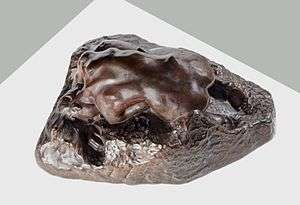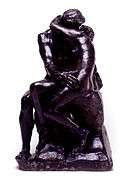Museo Soumaya
The Museo Soumaya is a private museum in Mexico City and a non-profit cultural institution with two museum buildings in Mexico City - Plaza Carso and Plaza Loreto. It has over 66,000 works from 30 centuries of art including sculptures from Pre-Hispanic Mesoamerica, 19th- and 20th-century Mexican art and an extensive repertoire of works by European old masters and masters of modern western art such as Auguste Rodin, Salvador Dalí, Bartolomé Esteban Murillo and Tintoretto. It is called one of the most complete collections of its kind.[2][3]
Museo Soumaya | |
Exterior of the Plaza Carso building, 2014 | |
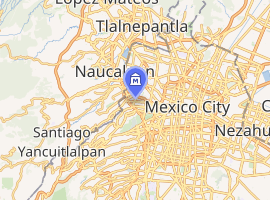
| |
| Location | Nuevo Polanco, Mexico City |
|---|---|
| Coordinates | 19.440806°N 99.204583°W |
| Type | Art museum |
| Accreditation | ICOM; Mexican ILM; FEMAM |
| Collection size | 66,000+ |
| Visitors | 1.1 million (2013)[1]
|
| Founder | Carlos Slim |
| Director | Alfonso Miranda |
| Owner | Carlos Slim Foundation |
| Public transit access | |
| Website | soumaya |
Building details | |
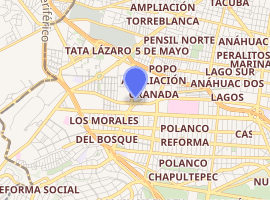
| |
| Design and construction | |
| Architect | Fernando Romero |
The museum is named after Soumaya Domit, who died in 1999, and was the wife of the founder of the museum Carlos Slim.[4] The museum received an attendance of 1,095,000 in 2013, making it the most visited art museum in Mexico and the 56th in the world that year.[1] In October 2015, the museum welcomed its five millionth visitor.[5] The museum was designed by Fernando Romero's practice, fr·ee.
Collection

The Museo Soumaya has a collection of over 66,000 pieces of art. The majority of the art consists of European works from the 15th to the 20th centuries. It also holds Mexican art, religious relics, and historical documents and coins.[6] The museum contains the world's largest collection of pre-Hispanic and colonial era coins.[4]
The museum holds the largest collection of casts of sculptures by Auguste Rodin outside France, and the world's largest private collection of his art.[7] Slim owns a total of 380 casts and works of art by Rodin. His late wife, whom he credits with teaching him much of what he knows about art, was an admirer of Rodin's work.[4] In addition to Rodin, some notable European artists whose work is displayed include Salvador Dalí, Pablo Picasso, the circle of Leonardo da Vinci, Pierre-Auguste Renoir, Joan Miró, Vincent van Gogh, Henri Matisse, Claude Monet, Bartolomé Esteban Murillo, El Greco, Camille Claudel, and Tintoretto.[6] The most valuable work of art in the collection is believed to be a version of Madonna of the Yarnwinder by a member of the circle of Leonardo da Vinci. Another version of the same painting has been valued at over £30 Million.[4]
Several Mexican artists are also featured, including Diego Rivera and Rufino Tamayo.[7] The director of the museum has claimed that the total worth of the art it holds is over $700 million.[4]
The museum's director, Alfonso Miranda, has described its approach as "not a copy of the Occident; what we have is a whole new version of things."[6] The museum notably includes some types of European art that have not been permanently displayed in Latin America in the past. The museum collection includes many of the most well known European artists from the 15th to 20th centuries, in particular a large collection of sculptures by Rodin and Salvador Dali.
Carlos Slim bought a large number of sculptures by Rodin in the 1980s and the value of many of these pieces has soared since. With a collection of over 100 Rodin works, some critics have claimed that Slim "...is more of a bargain hunter than an aesthete".[6]
Building
The original building of the Museo Soumaya, opened in 1994, is in the Plaza Loreto of San Ángel in the southern part of Mexico City. The new building in Plaza Carso in the Nuevo Polanco district was designed by the Mexican architect Fernando Romero and opened in 2011. The building is named after Lebanese-Mexican Soumaya Domit Gemayel who is the late wife of Lebanese-Mexican billionaire Carlos Slim Helu. Her relatives are also the important political family Gemayel in Lebanon and is a cousin of the former President's Bashir and Amine Gemayel.
Plaza Loreto

Built near the Magdalena river the museum's first building is on what was part of the encomienda of the conquistador Hernán Cortés in the 15th century. His son Martín Cortés installed a wheat watermill on the site which in the 19th century was converted to a paper mill. In 1905 a fire broke out in the facility and as a result, on 13 October 1905, its then owners sold to Alberto Lenz. In 1906 Lenz converted the mill to a factory named Fábrica de Papel de Loreto y Peña Pobre after which the current plaza is named.[8]
In the 1980s, another fire destroyed most of the facilities and operations were transferred to the state of Tlaxcala. This led to the Grupo Carso undertaking an urban conversion of the ruins to turn it into what is now the site of the museum - officially founded in 1994.[9] In 1996 the museum received heritage recognition from ICOMOS. The museum building featured four distinct rooms each of which had a specific theme: European & Mexican landscape; The age of Rodin; Mexican calendars; temporary exhibitions.[9] In 2014, on the occasion of its 19th anniversary, it hosted the exhibition European Landscapes, showing 50 works by Pierre-Antoine Demachy, Klaes Molenaer and Joost Carhelisz. 24 of these were new acquisitions.[10]
Plaza Carso
In 2011 the main collection moved to a new 16,000-square-metre (170,000 sq ft) building, constructed in the north of the city in Plaza Carso.[11]
Construction
The building is a 46-metre-high (151 ft) six-story building covered by 16,000 hexagonal aluminum tiles.[6][7] The aluminium used in the project was supplied by a company that is also owned by Carlos Slim. The new building was designed by the Mexican architect Fernando Romero, who is married to a daughter of Carlos Slim,[6][11] engineered with Ove Arup and Frank Gehry,[12] and cost $70 million to build. The museum has a narrow entrance that opens into a large white gallery.[6] The top floor of the building is opened so that it is illuminated by sunlight during the daytime. In addition to the art galleries, the new building contains a library, restaurant, and a 350-seat auditorium.[11]
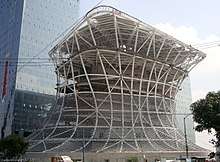
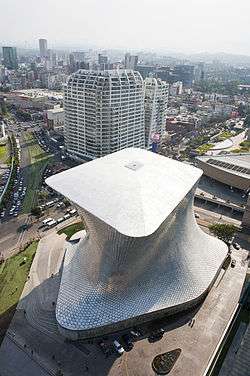
Each of the six floors of the museum are distinctly shaped.[6] The weight of the building is held by an exoskeleton of 28 vertical curved steel columns and seven beams encircling the structure built by a Slim-owned company that manufactures offshore oil rigs.[13] In addition, the roof is kept stable through its suspension from a cantilever.[11] The floors are made of high quality marble that was imported from Greece.[4]
The new location of the Museo Soumaya was officially inaugurated on February 28, 2011 that culminated in a ceremonial ribbon cutting. Notable guests that participated in the ribbon cutting included Felipe Calderón, Gabriel García Márquez, Evelyn Robert de Rothschild, and Larry King. The new building opened to the public on March 28, 2011. Admission to the museum is now free of charge and the operating costs are covered by Slim's fortune, which was the world's largest at the time the new location opened.[6]
The museum is located in a large mixed-use development, Plaza Carso in Nuevo Polanco. This project was also built by Carlos Slim and features many of his companies, as well as a luxury hotel and several apartment buildings. The entire development cost almost $800 million to build.[6][7]
Rooms

- Entrance: This foyer area is an asymmetric, high-ceiling vestibule. This space is devoted to temporary exhibitions, events, and the permanent exhibits of large-format works: The Thinker by Auguste Rodin, Río Juchitán, the last mural by Diego Rivera, Still life by Rufino Tamayo, Day and night by Rufino Tamayo, and Pieta, cast in bronze in the 19th century by Ferdinando Marinelli Artistic Foundry from the original marble by Michelangelo Buonarroti.
- Level 1: Gold and silver: decorative arts. Collection of coins, medals, and banknotes dating from the Viceroyalty to the post-revolutionary era. There are also objects in ivory, silk, and precious stones for religious and civil use.
- Level 2: Temporary exhibitions
- Level 3: European and Novohispanic Old Masters. Works of European artists such as the Cranachs, Tintoretto, el Greco, Peter Paul Rubens, Artemisia Gentileschi, and Murillo, with Colonial works by, among others, Villalpando, Juárez, Cabrera, and Páez.
- Level 4: From Impressionism to the Avant-garde. Landscape and costumbrist works of 19th-century Mexico by Chapman, Rugendas, Egerton, Linati, Baron Gros, Löhr, Landesio and Velasco together with works from the European movements and vanguards, by Manet, Claude Monet, Pierre-Auguste Renoir, Edgar Degas, Camille Pissarro, Vincent van Gogh, Vlaminck, Marc Chagall, and Joan Miró.
- Level 5: (temporary) : Venice Museo Soumaya Collection.
- Level 6: Julián and Linda Slim / The Rodin Era. Works by Rodin and his pupils and associates, such as Camille Claudel and Émile-Antoine Bourdelle. The surrealist sculptures by Salvador Dalí are exhibited on this level.

Critical reception
Mexican president Felipe Calderón praised the museum as a place where "Mexicans can learn about the great masters of all time".[6] Slim himself described the museum as his attempt to increase the "humanistic capital" of Mexico City.[6] He has noted that since many Mexicans cannot afford to travel to Europe to view art collections there, it was important to house a prestigious collection of European art in Mexico itself. Some commentators, including Larry King, have predicted that the museum will cause an increase in the number of tourists from the United States who visit Mexico City.[7]
Headlines such as "Carlos Slim's Xanadu?: Reactions to the World's Richest Man's Overweening New Museo Soumaya", "Emperor's New Museum", and "Photos: World's Richest Man Opens World's Flashiest Museum" reflect criticisms of Carlos Slim as a business man, the quality of the work exhibited, and the quality of the building.[14]
Gallery
15th to 16th century
- La resurrección de Cristo, 1508, by Juan de Flandes.
- La Virgen y el Niño en un nicho, 1476, by Sandro Botticelli and workshop.
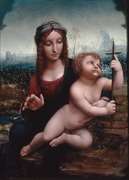 Virgen del huso, c. 1501-1540, workshop of Leonardo Da Vinci.
Virgen del huso, c. 1501-1540, workshop of Leonardo Da Vinci.- Don Juan de Austria, 1560, of Alonso Sánchez Coello.
 Tintoretto - Deploration of Christ, c. 1556-59
Tintoretto - Deploration of Christ, c. 1556-59
From Ancient Mexico to Modern
- Virgen de Guadalupe con las cuatro apariciones by Juan de Sáenz
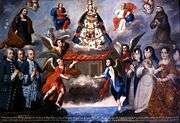 Josep Antonio de Ayala, The del Valle family at the feet the Virgin of Loreto, 1769. In the collections of the Museo Soumaya
Josep Antonio de Ayala, The del Valle family at the feet the Virgin of Loreto, 1769. In the collections of the Museo Soumaya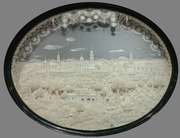 Panorama of the city of Celaya made from rice paper
Panorama of the city of Celaya made from rice paper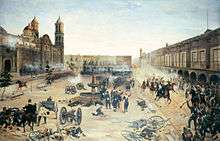 2 de abril de 1867. Entrada del general Porfirio Díaz a Puebla, 1902, by Francisco de Paula Mendoza.
2 de abril de 1867. Entrada del general Porfirio Díaz a Puebla, 1902, by Francisco de Paula Mendoza.- Paisaje con bosque y río, early 20th century, by Joaquín Clausell
European and Novohispanic Old Masters
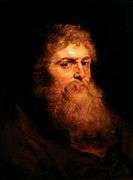 Peter Paul Rubens - Cabeça de homem barbado, 1617-1618.
Peter Paul Rubens - Cabeça de homem barbado, 1617-1618.
 Mary Magdalene as the Melancholy by Artemisia Gentileschi
Mary Magdalene as the Melancholy by Artemisia Gentileschi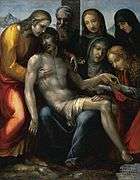 Il Sodoma - Pietà, 1533.
Il Sodoma - Pietà, 1533.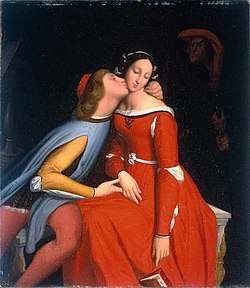 Jean-Auguste Dominique Ingres. Paolo e Francesca, s.d.
Jean-Auguste Dominique Ingres. Paolo e Francesca, s.d.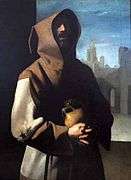 Francisco de Zurbarán. São Francisco de Assis em êxtase, 1635-1640.
Francisco de Zurbarán. São Francisco de Assis em êxtase, 1635-1640.
From Impressionism to the Avant-garde
 Paisaje en Port-Villez, 1883, by Claude Monet
Paisaje en Port-Villez, 1883, by Claude Monet Statue d’Henri IV, 1901, by Camille Pissarro
Statue d’Henri IV, 1901, by Camille Pissarro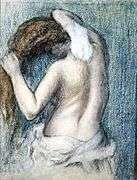 Woman Washing, c. 1906, by Edgar Degas.
Woman Washing, c. 1906, by Edgar Degas.- La casa de Collettes en Cagnes, 1912, by Pierre-Auguste Renoir
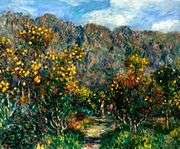 Pierre-Auguste Renoir. Parque de Les Collettes, 1912.
Pierre-Auguste Renoir. Parque de Les Collettes, 1912.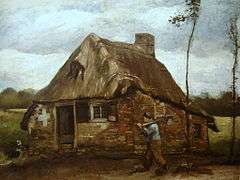 Vincent van Gogh Cabin with farmer
Vincent van Gogh Cabin with farmer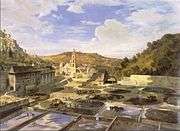 Courtyard of the Hacienda de Regla (1857) by Eugenio Landesio
Courtyard of the Hacienda de Regla (1857) by Eugenio Landesio
Sculpture by the French artist Auguste Rodin
References
- Top 100 Art Museum Attendance, The Art Newspaper, 2014. Retrieved on 9 July 2014.
- Excélsior (1 April 2011). "Museo Soumaya gratis y entre los mejores (Museo Soumaya free and among the best)" (in Spanish). Retrieved 28 September 2014.
- Miselem, Sofía (1 April 2011). "Magnate mexicano-libanés Slim reúne en México obras de arte de renombre mundial" (in Spanish). AFP.
- "Carlos Slim: At home with the world's richest man". The Telegraph. 21 February 2011.
- "Museo Soumaya llega a 5 millones de visitantes" (in Spanish). Fundación Carlos Slim. 27 October 2015.
- Casey, Nicholas (3 March 2011). "Emperor's New Museum". The Wall Street Journal. Retrieved 29 March 2011.
- Tuckman, Jo (2 March 2011). "Mexican billionaire's new museum gives The Thinker much to ponder". The Guardian. London. Retrieved 29 March 2011.
- Rafael Loera y Cháve, ed. (1957). Loreto. Historia y evolución de una fábrica de papel [Loreto. History and evolution of a paper factory] (in Spanish). Fábrica de Papel Loreto y Peña Pobre S.A. OCLC 37418538.
- "Plaza Loreto". Museo Soumaya. Retrieved 29 September 2014.
- Ávila, Sonia (9 December 2013). "El Museo Soumaya de Plaza Loreto festeja 19 años (The Museo Soumaya of Plaza Loreto celebrates 19 years)". Excélsior (in Spanish). Retrieved 29 September 2014.
- "Museo Soumaya in Mexico City gets asymmetrical new building". Wired. 26 November 2010. Archived from the original on 29 July 2012. Retrieved 5 September 2017.
- "Mexico's Carlos Slim Builds a Dazzling Art Palace". Business Week. 26 January 2010.
- "Terms of Service Violation". Businessweek.com. Retrieved 26 July 2018.
- Casey, Nicholas (3 March 2011). "Emperor's New Museum". The Wall Street Journal.
External links
| Wikimedia Commons has media related to Museo Soumaya. |
- (in Spanish)—Official Museo Soumaya website

